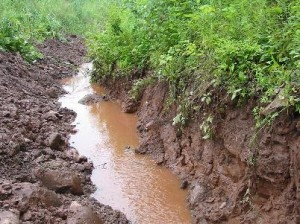Findings and Conditions for the Hawaii Coastal Nonpoint Pollution Control Program
NOAA and EPA’s Findings and Conditions for “Hawaii’s Coastal Nonpoint Pollution Control Program” (CNPCP)
In July 1998, the National Oceanic and Atmospheric Administration (NOAA) and the Environmental Protection Agency (EPA) published a notice in the Federal Register announcing the availability of the final Findings and Conditions for Hawaii’s Coastal Nonpoint Pollution Control Program (CNPCP). This Findings and Conditions document is the culmination of NOAA and EPA’s review of Hawaii’s CNPCP. It grants the State conditional approval of its program and enumerates conditions which Hawaii must fulfill to receive full approval.
 The State’s Department of Health and Office of Planning worked extensively with NOAA and EPA during their development of these Findings and Conditions. Despite reviews of several drafts and numerous conference calls and meetings, the final document does not address several of our substantive and long-standing concerns about the CNPCP and NOAA and EPA’s expectations.
The State’s Department of Health and Office of Planning worked extensively with NOAA and EPA during their development of these Findings and Conditions. Despite reviews of several drafts and numerous conference calls and meetings, the final document does not address several of our substantive and long-standing concerns about the CNPCP and NOAA and EPA’s expectations.
Briefly, our outstanding concerns on the Findings and Conditions document are as follows:
Some of the federally mandated management measures cannot be implemented in an economically achievable manner in Hawaii, given the State’s unique economic, political, and geophysical characteristics. Furthermore, the opinions of local technical experts should prevail over federal technical experts in the event of disagreements over the achievability of management measures.
Time frames for addressing conditions and implementing the program are not achievable given current funding levels. More resources are needed for the State to develop appropriate management measures and effectively implement the program.
NOAA and EPA expect the State to have oversight authority or back-up enforcement authority over all aspects of the implementation of the CNPCP at the county level. This requirement is inconsistent with the constitutional and historical political relationships between the State and the Counties.
Clean coastal water quality and improved control of polluted runoff remain State priorities. We are committed to developing a CNPCP that our State and County agencies and other organizations can implement to make meaningful improvements to coastal water quality and polluted runoff control. We are working with these agencies and affected stakeholders to develop a program that is most appropriate for Hawaii. Only through partnerships with stakeholders (agencies, university, non-government organizations, and individuals), which entails listening to expertise and working together to develop appropriate mechanisms and measures, will we be able to develop an effective and successful Hawaii CNPCP.
